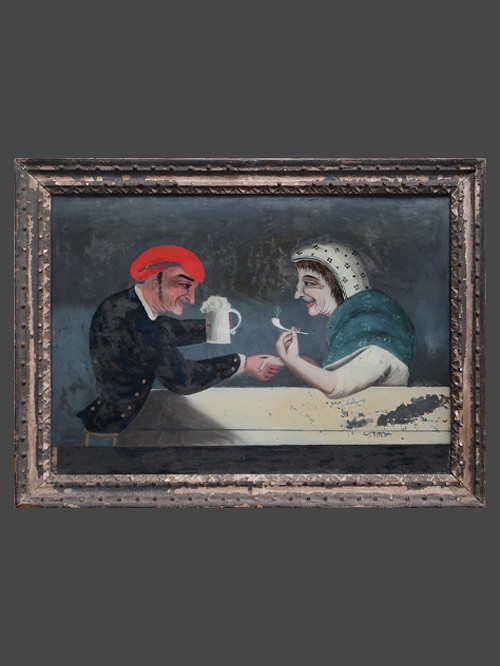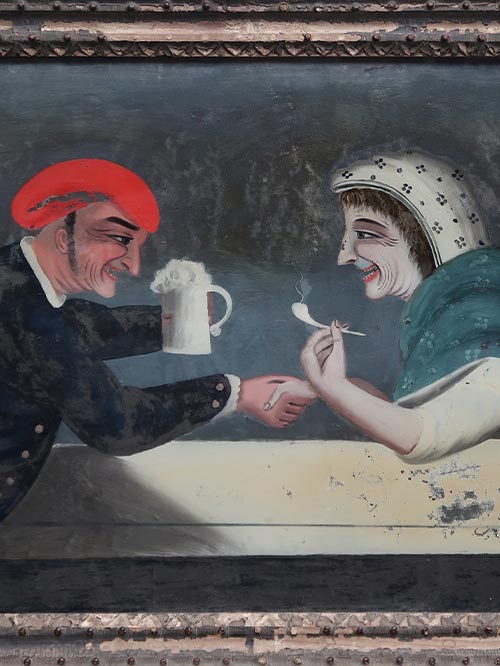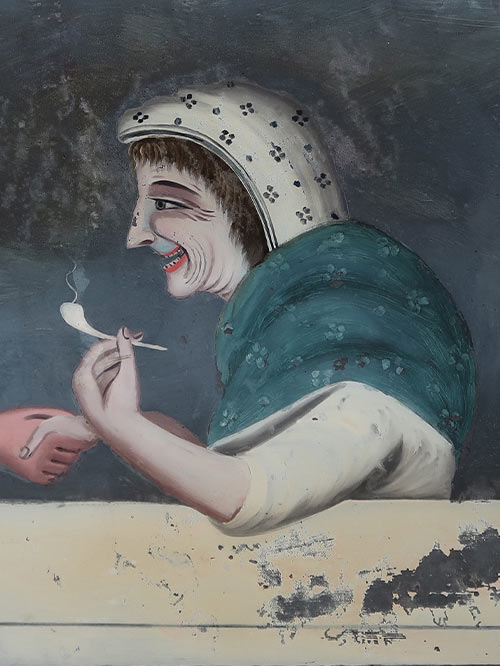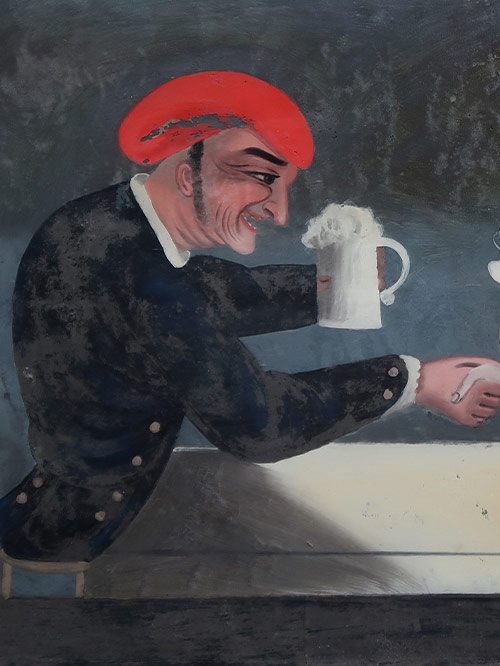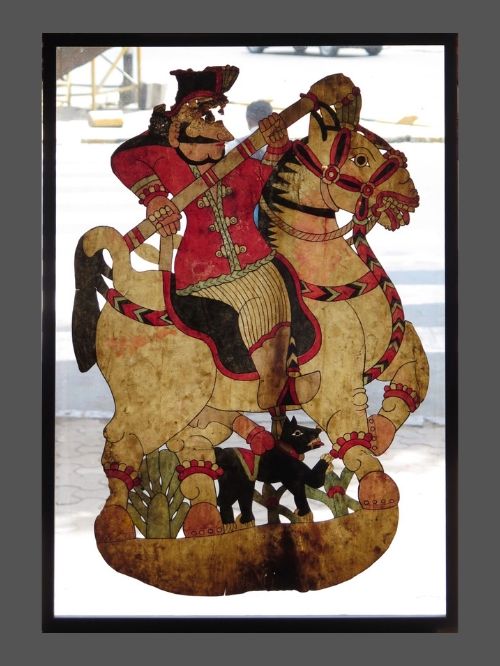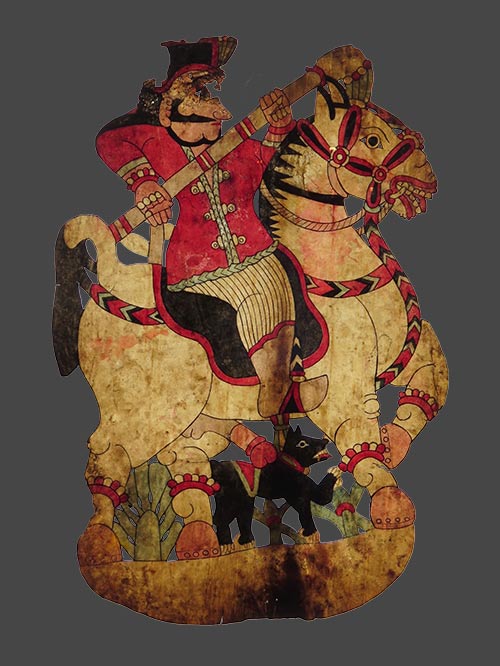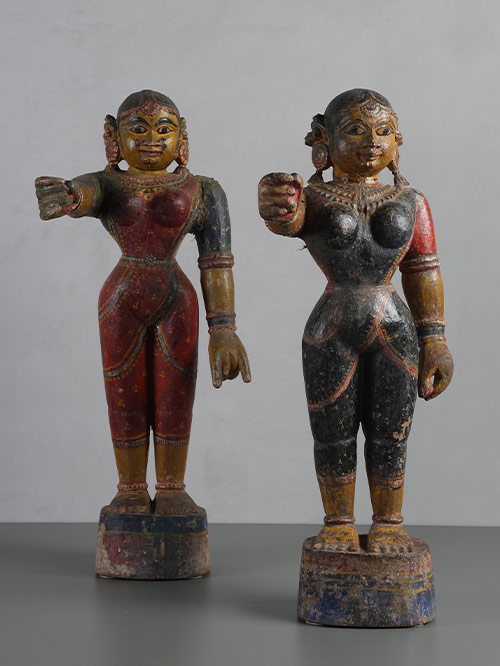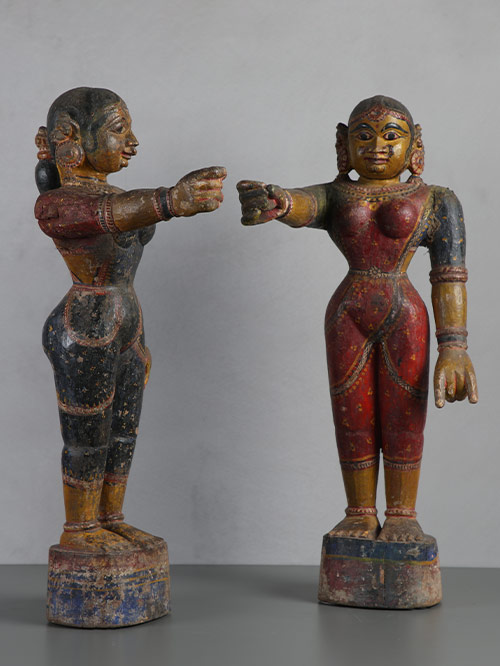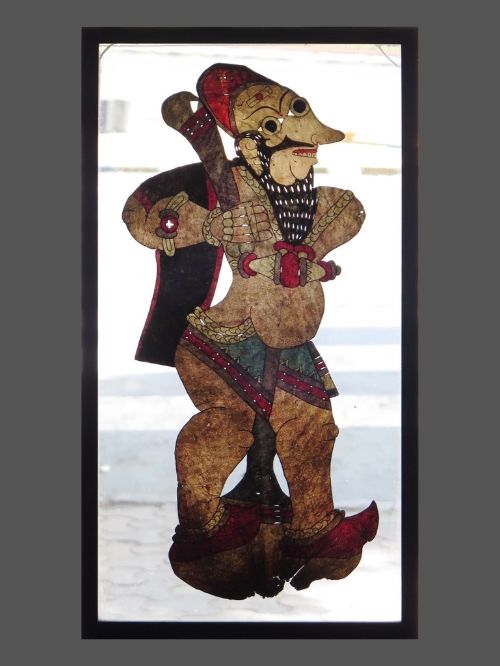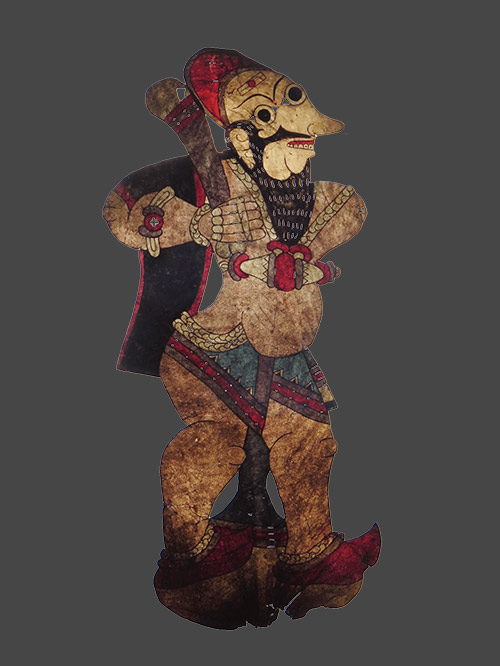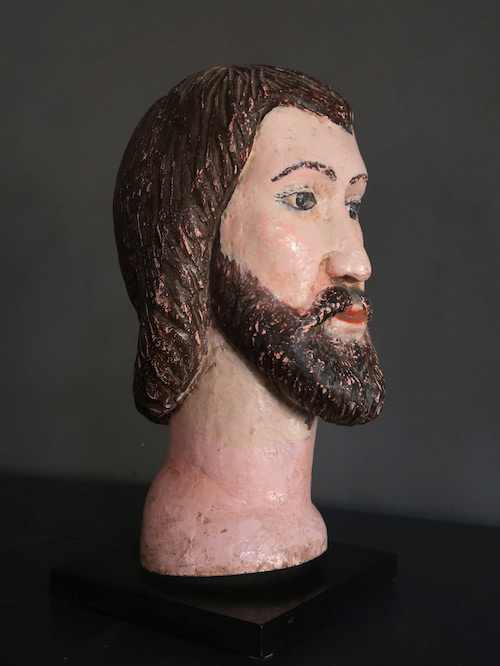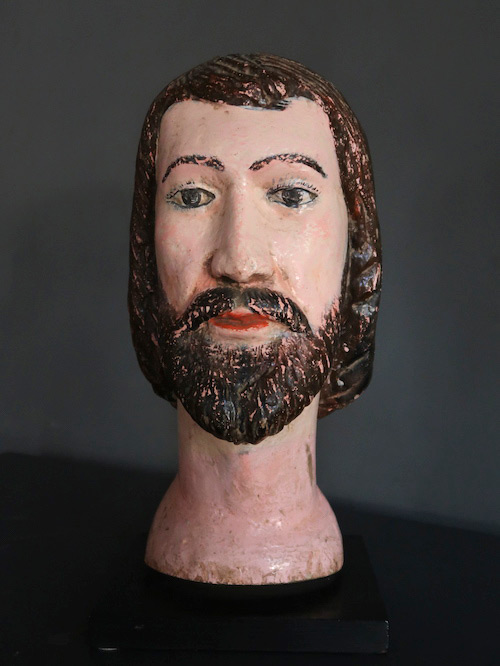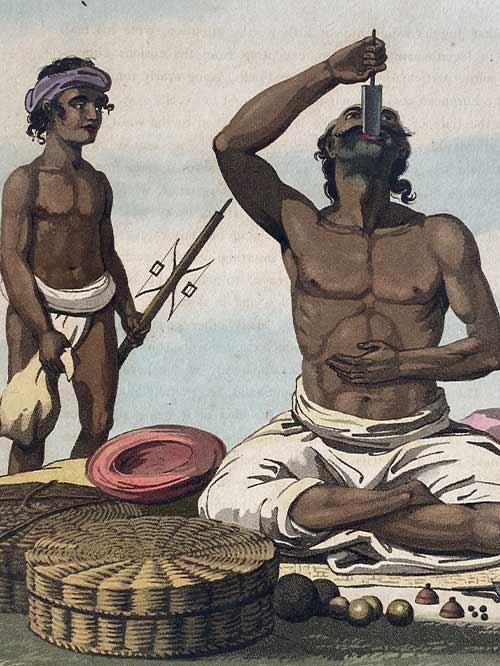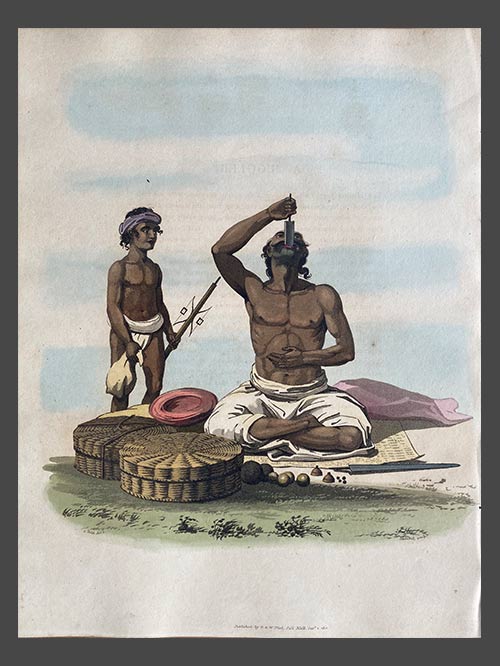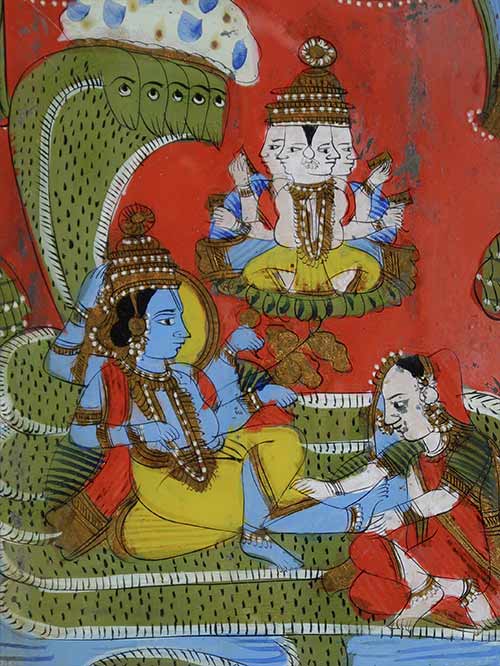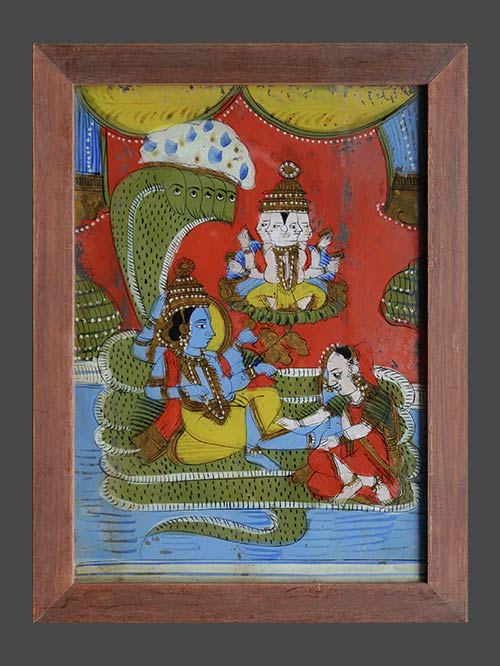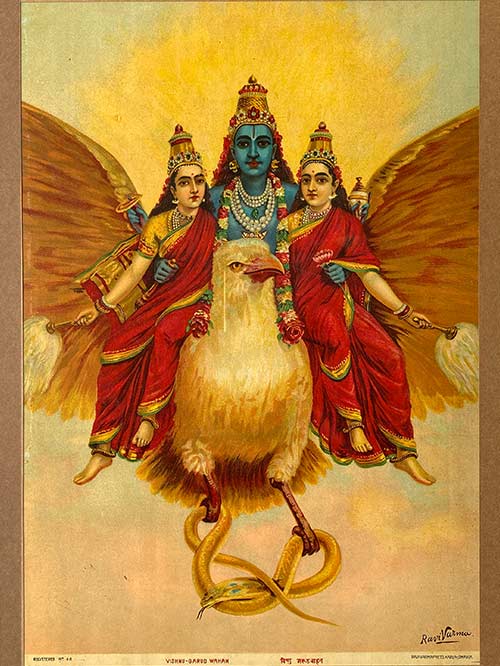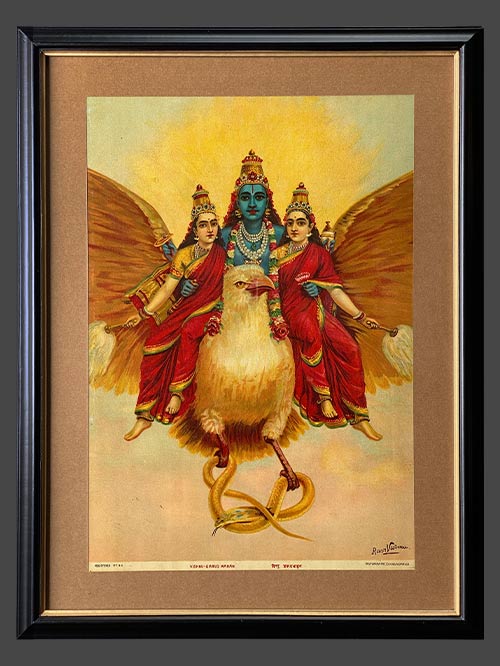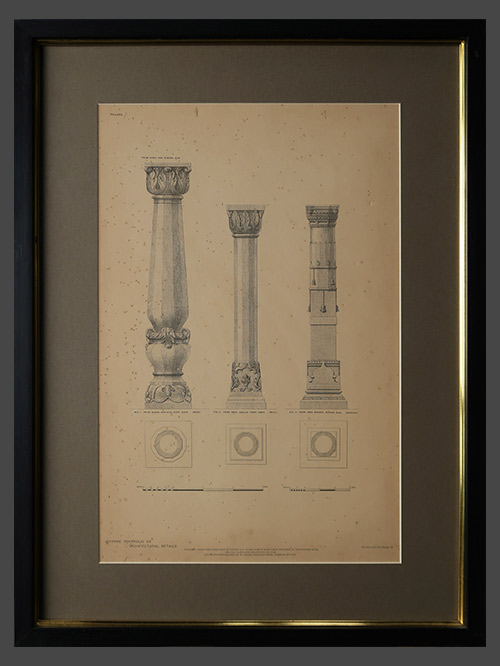Western India
reverse painting on glass by a Chinese Artist
The love for the exotic is amply demonstrated by this copy of a Dutch genre painting or engraving. An aged couple sit at the table; their curved shoulders and wrinkled faces unmercifully rendered. The man, in a red cap and dark jacket with metal buttons, carries in one hand a tankard filled with beer whose head is almost running over its rim. He warmly shakes the hand of the woman, who holds a pipe in her left hand. Her head is covered by a light coloured cloth and her shoulders are swathed in an indigo shawl, both executed in tie and dye technique. These items, imported from India, were extremely fashionable in eighteenth and nineteenth century Europe. A shaft of light falls on the table and on the couple, setting off the man’s cap and the woman’s head cloth and shawl on an otherwise grey background.
Reverse glass paintings were introduced into India the late 18th century from China by way of the China Trade. Indian artists adopted the technique of reverse glass painting partly on account of its novelty and also because it was a relatively inexpensive medium which could produce rich effects. The technique proved extremely popular and soon spread through western and southern India and even to former provincial Mughal capitals of Oudh, Murshidabad.
What is also significant is that there were some Chinese painters at work in India as well. One is known to have been at the court of Tipu Sultan and a large number of his paintings are in the collection of the Jagmohan Palace Art Gallery at Mysore. A lively market for reverse glass paintings, mainly depicting Hindu deities and portraiture by Chinese artists likely flourished, particularly on the west coast in places like Surat and Cambay.
Size Framed (cms): 42 (H) x 57 (L)
Size Framed (inch): 16.5 (H) x 22.4 (L)
Size Painting (cms): 34 (H) x 49 (L)
Size Painting (inch): 13.4 (H) x 19.3 (L)

